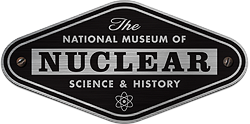Herbert E. Kubitschek (1920-1989) was an American biologist and physicist.
He studied under Enrico Fermi at the University of Chicago and was present when Chicago Pile-1, the world’s first self-sustained nuclear chain reaction, went critical on December 2, 1942. In the photograph from the twentieth reunion of the reactor going critical (left), Kubischek appears in the top row, second from the right. He later signed the Szilard petition, which attempted to avert the use of the atomic bombs against Japan.
After World War II, he worked for many years as a senior scientist at Argonne National Laboratory. Kubitschek wrote more than 100 papers and articles, and is best known for proposing that cell growth is linear.





![Scientists at the 20th reunion of the Chicago Pile-1 going critical. Photo Credit: University of Chicago Photographic Archive, [apf3-00242], Special Collections Research Center, University of Chicago Library.](https://ahf.nuclearmuseum.org/wp-content/uploads/2017/07/Chicago Pile scientist 20 year reunion.jpg)